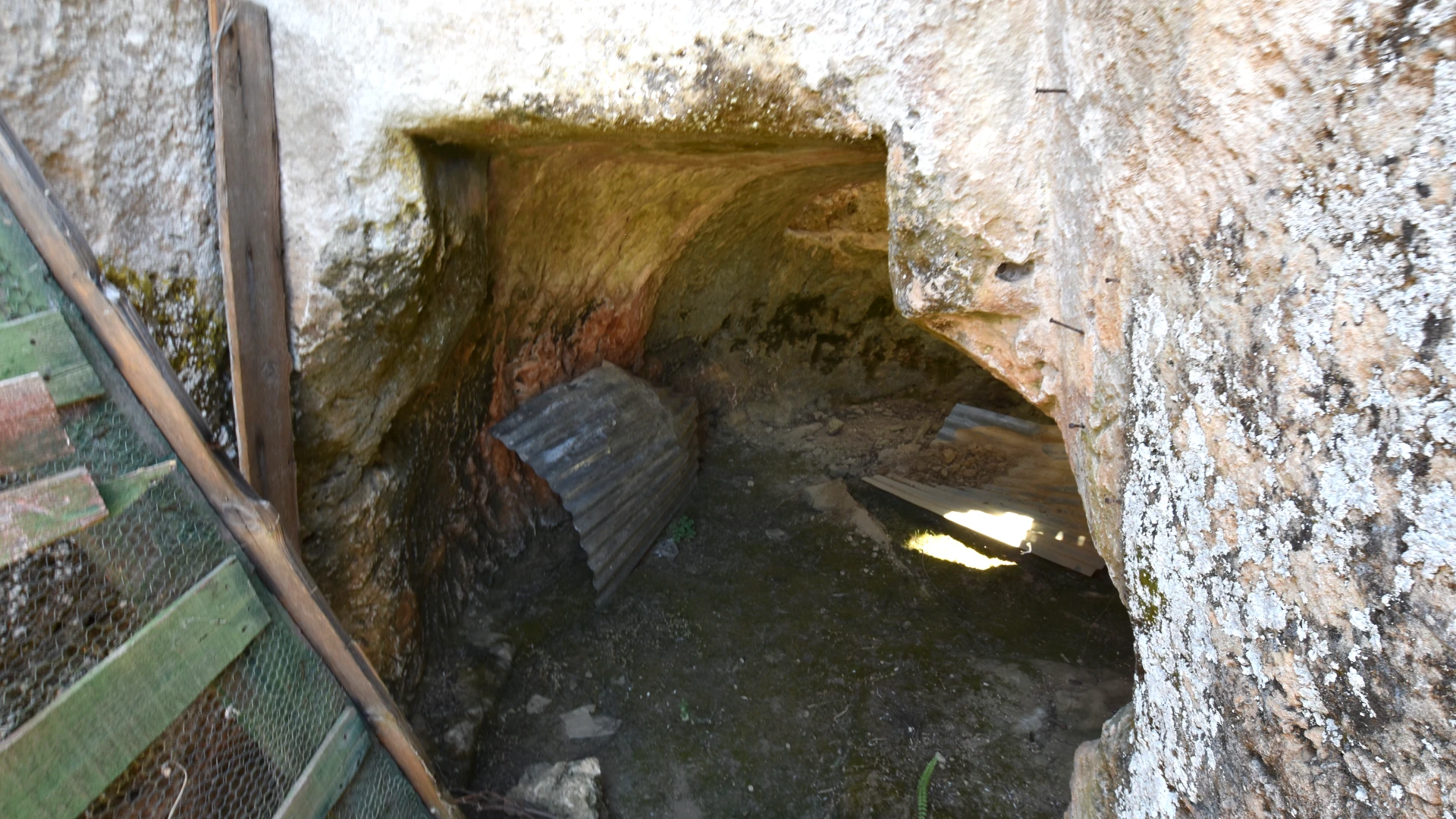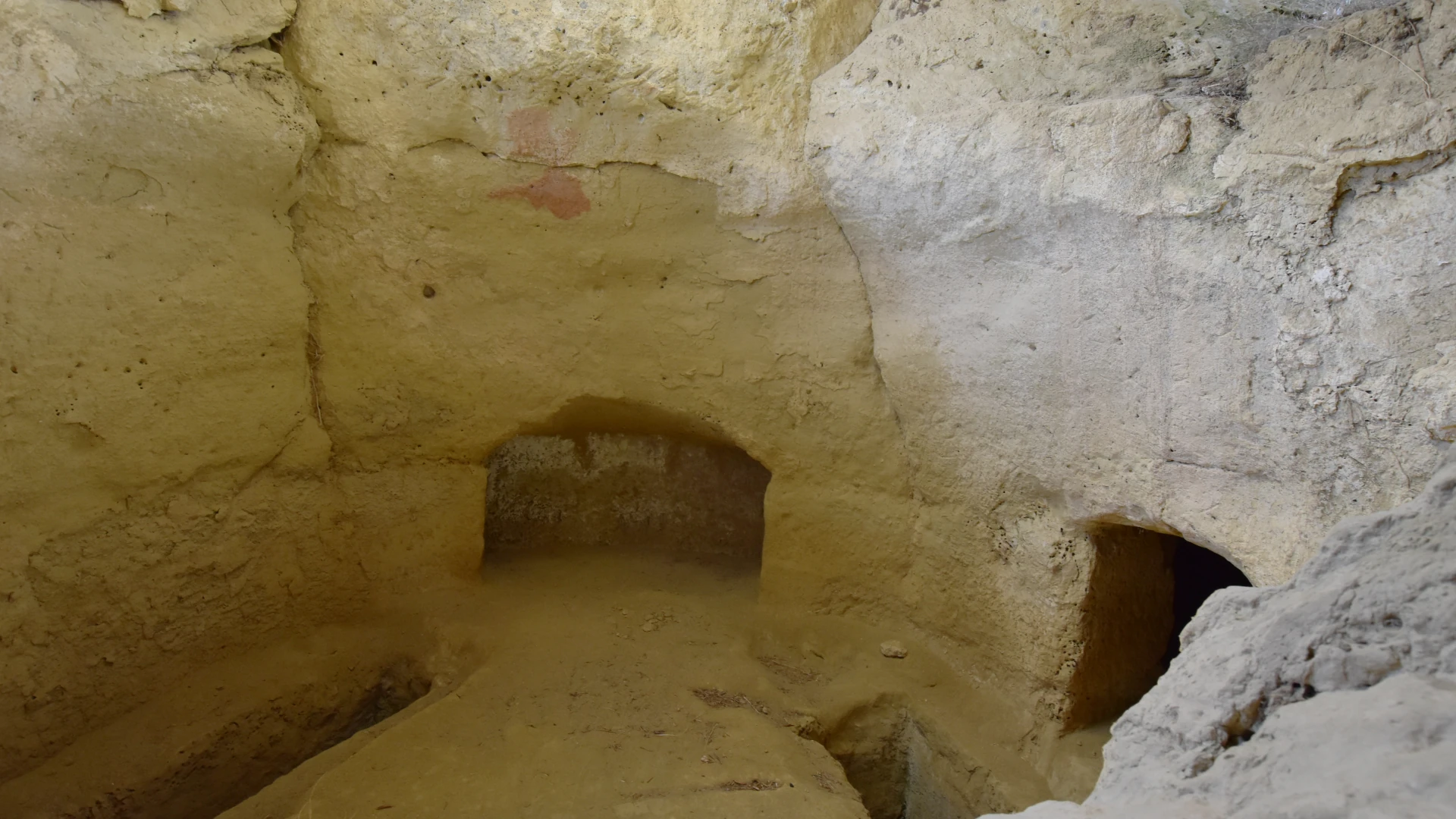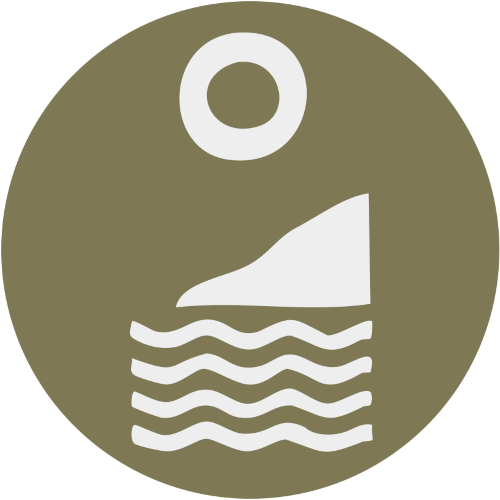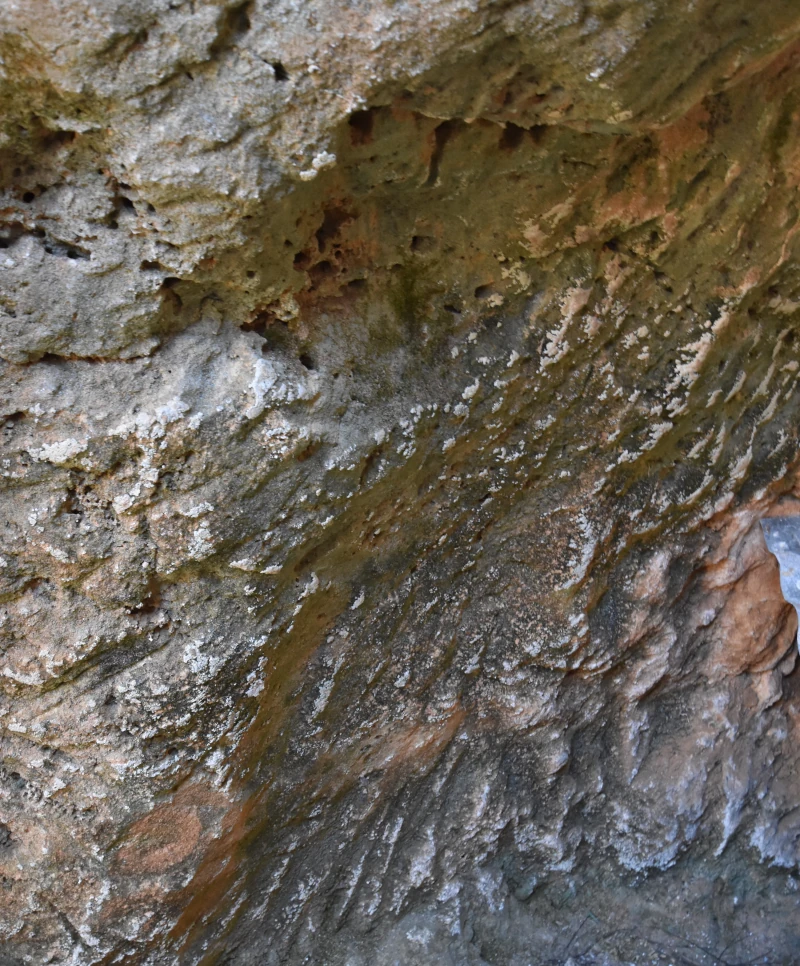Mycenaean Mani
read time: 4 mins
Another Mani Mystery - the Mycenaean tomb in Proastio
There is evidence from the past all around us in Mani. Threshing circles in every village bear witness to a comparatively recent agricultural age. But structures from the Bronze Age are less commonly encountered. Living in Proastio I have become fascinated by a local Mycenaean tomb. It lies just off the modern road leading out of the village up towards Exochori. The old footpath from Petrovouni joins this road just below the tomb. If you walk 250 metres along this path towards the ruined monastery surrounded by cypress trees of Agios Georgios you will pass through a strange landscape of pits cut into the soft stone. Returning to the road follow a modern track up into the shallow valley on the other side of the road and you will find more pits. As the Anavasi map of Exo Mani indicates this whole area is a Mycenaean graveyard. Its position adjacent to a modern quarry indicates the stone round about is relatively workable. Its other adjacency with Proastio’s Christian graveyard speaks of a continuity of human activity here on this shoulder of well-watered land with strategic views both to seaward and to the Taygetos mountains above.
Grooves left by the bronze chisels
But the stand out tomb in this funereal landscape lies 150 metres in from the road and has three structural elements which confirms its Mycenaean provenance. To the North-East a 3 metre long passage way with elegantly tapering sides open to the sky allows sunlight to illuminate the smooth cut surface glowing orange in the afternoon light. This dromos, as archaeologists refer to these typical Mycenaean passage ways, leads you into a 2 metre hemispherical chamber cut into the rock to the South-West. This classifies our Proastio tomb as a ‘chamber tomb’. The chamber would have been dark before the partial collapse of its roof which now allows some light in. The internal walls are roughly hewn and show the grooves left by the bronze chisels and picks hafted onto wooden handles with which these early masons cut the soft limestone. The transition from the light passage into the dark chamber is through the stomion which in our Proastio example has been fashioned out of the rock face to present a smoothly cut apical triangle of stone beneath which the entrance has been opened in the shape of a head and shoulders. This presumably allowed some headroom to the living as they carried in the deceased. From other sites we know that ritual objects were buried in this liminal space marking the boundary between life and death. These include vessels presumably used in offering a libation to the gods, who already included Zeus and Poseidon, animal bones and food remains possibly related to sacrificial feasting. As the funeral monuments became grander the grave goods interred with the deceased in the chamber became more extravagant from small figurines to golden death masks.
Picture below: Proastio chamber tomb stomion and interior

“Where and when did the people of the tomb live? What did they farm? What was their relationship to the great palace at Mycenae?“
It’s tantalising to have a chamber tomb but no local archaeological evidence of settlement. Where and when did the people of the tomb live? What did they farm? What was their relationship to the great palace at Mycenae? And indeed to the nearer palace of Pylos in Western Messenia and the newly discovered Laconian palace of Ayios Vasileios across the Taygetos? Fortunately the Mycenaeans left behind some written records to help us with these questions. The palaces administered their economies using an early form of writing, linear B, which is a forerunner of classical Greek. By good fortune an otherwise catastrophic fire at Pylos baked clay tablets on which the latest accounts had been recorded enabling them to be read and deciphered in the 1950’s.
So how long ago was our tomb built and where does it fit in the Mycenaean age? In the absence of excavation evidence locally in Proastio we can make an informed estimate by considering similar monuments elsewhere. The Bronze Age in the Eastern Mediterranean basin runs from approximately 3000 BCE to a mysterious period of disruption known as the bronze age collapse in the 12th century BCE. The Pylos palace destruction by fire is part of this period of disruption dating to 1200 BCE. So it is certain that our Mycenaean tomb predates this. Those who have visited Mycenae on your way to Mani will have seen the early shaft graves by the Lion gate. These are where the 19th century German Archaeologist Schliemann famously excavated grave goods including a golden mask which was dubbed the ‘death mask of Agamemnon’ dated to 1500-1550 BCE. This period has been characterised on the basis of changes in ceramic styles as the transition from the middle Helladic to the Late Helladic. Chamber tombs such as our Proastio example are found throughout the Mycenaean world in the Late Helladic. So we can date the building of our tomb between 1450-1150 BCE. This was the period of Mycenaean Palace culture, associated with the increasing centralisation of wealth and power. Indeed the elaboration of our chamber tomb in comparison to the surrounding pit graves suggests it was initially built to commemorate someone of influence. I say ‘initially’ because most monumental graves were used for multiple interments over a period of generations. Between burials the dromos was in-filled to be reopened when again required. Indeed there was widespread re-use again in the classical period nearly a thousand years later out of a sense of veneration for the ‘age of heroes’.
Homer’s epic verse The Iliad is an account of that age of heroes passed down in oral traditions to be recorded in various written forms during the 8th Century BCE. Intriguingly this part of the Peloponnese is mentioned by Agamemnon, leader of the Greeks, whose power base was at Mycenae. In an effort to tempt the hero Achilles out of his tent where he is refusing to help the Greeks in their long campaign against the Trojans, Agamemnon makes him an offer. Amongst other gifts ‘Seven well populated cities he shall have’ including ‘Cardamyle, Enope and Antheia’ all ‘near the sea, on our far border with sandy Pylos, and the men there own great flocks and herds’. Frustratingly evidence of Mycenaean settlement is much less durable than their funeral monuments. Could the Mycenaeans of Cardamyle (Kardamyli) be carried all the way up to Proastio for burial? Not according to Sofia Voutsaki, an archaeologist who has excavated the Mycenaean cemetery at Ayios Vasileios. “It’s unlikely that a cemetery is located at such a distance from a settlement” she told me. So, was the original settlement actually situated near the Proastio graveyard?
The original occupant of our tomb must have been a man of influence. We know from the palace accounts at Pylos that the palace’s sphere of influence was divided into two provinces. Seven place names are listed in the ‘further’ province which were centres for the collection of produce. Consistent with the Homeric account of ‘great flocks’ the palace accounts list sizes of flocks by shepherd’s name and locality. Oil and aromatic herbs are also listed. In other words our ‘further’ province provided agricultural produce recognisable from the present day. This centralised extractive economy allowed craft specialisation and expensive grave goods marking the status of the palace elite. We can conjecture that these seven ‘further’ places correspond to the seven cities ‘on our borders’ promised in the Iliad. Could our tomb have been built for the man responsible for the local collection of palace dues?
Tholos or “beehive” tomb at Kambos
Coming back from legend to the archaeological evidence the chamber tombs of Messenia led on to the development of more elaborate corbelled beehive structures known as tholos tombs. The so called Treasury of Atreus at Mycenae, built around 1350 BCE, is the outstanding example and an indicator of the extent of the centralisation of wealth and power which had occurred by this time. There is a good example of a tholos tomb much closer to hand on the modern road to Kalamata at Kambos. Signposted from the road this is thought to be related to the ancient settlement of Enope (from Homer’s list of seven) on the hill above (where Zarnata castle now stands). For a masterclass in the development of Mycenaean tomb architecture visit the necropolis of Ancient Thouria at Aepeia (not to be confused with nearby Aithaia) just off the old Athens road 10kms North of Kalamata. Follow signage to the Asclepion, park by the cemetery and walk up to the ridge above (half an hour following a partially paved track behind the cemetery). Look out for wire fencing at the top with gates (unlocked whenever I have visited) inside which you’ll find a whole gallery of a dozen or more chamber tombs carved out of the soft rock above a dramatic gorge. It has been suggested that this was the centre of the ‘further’ province of Pylos and appears on Homer’s list of seven cities as Antheia.

Chamber tomb with multiple niches, Thouria
There has been a modern reaction against an overly literal correspondence between the world described in Homer’s Iliad and the archaeological evidence left to us of the Mycenaean age. However a visit to this part of the world would be incomplete without seeing ‘sweet-spoken Nestor’s palace at ‘Sandy Pylos’. Its discovery by a joint Greek and American team in the 1930’s was explicitly triggered by Homer’s description of a palace by Sandy Pylos. Enquiry of locals for the whereabouts of ancient walls led the team to a low hill with sweeping views where their first trench discovered palace walls and the first five fire-baked tablets inscribed in linear B. When I tried the same technique in Maria’s Grill in Proastio a low hill above the village with sweeping views was suggested by old Panayioti. You can find the place behind a distinctive double vaulted chapel above the graveyard in Proastio. It has evidence of ancient masonry and lies less than 500 metres from the Mycenaean graveyard below. It’s my candidate site for the settlement of the inhabitants of our Mycenaean graveyard. So far no ancient sherds of pottery have come to light up there but I’ll keep looking.
Dr Matthew Ellis
WRITE YOUR OWN ARTICLE & GET A FREE YEAR'S SUBSCRIPTION!
Have you got something Mani-related to say, enjoy writing and would like to be a part of this new site? We’d love hear from you as we want this site to be yours, not ours- why should we always be the ones to decide on the magazines’ content? And in the process, you get a year’s FREE membership to the site.
If you’re interested in being involved, you could email your idea directly to mat@insidethemani.com but it may be more time effective if you first read some suggestions and FAQ’s HERE.


